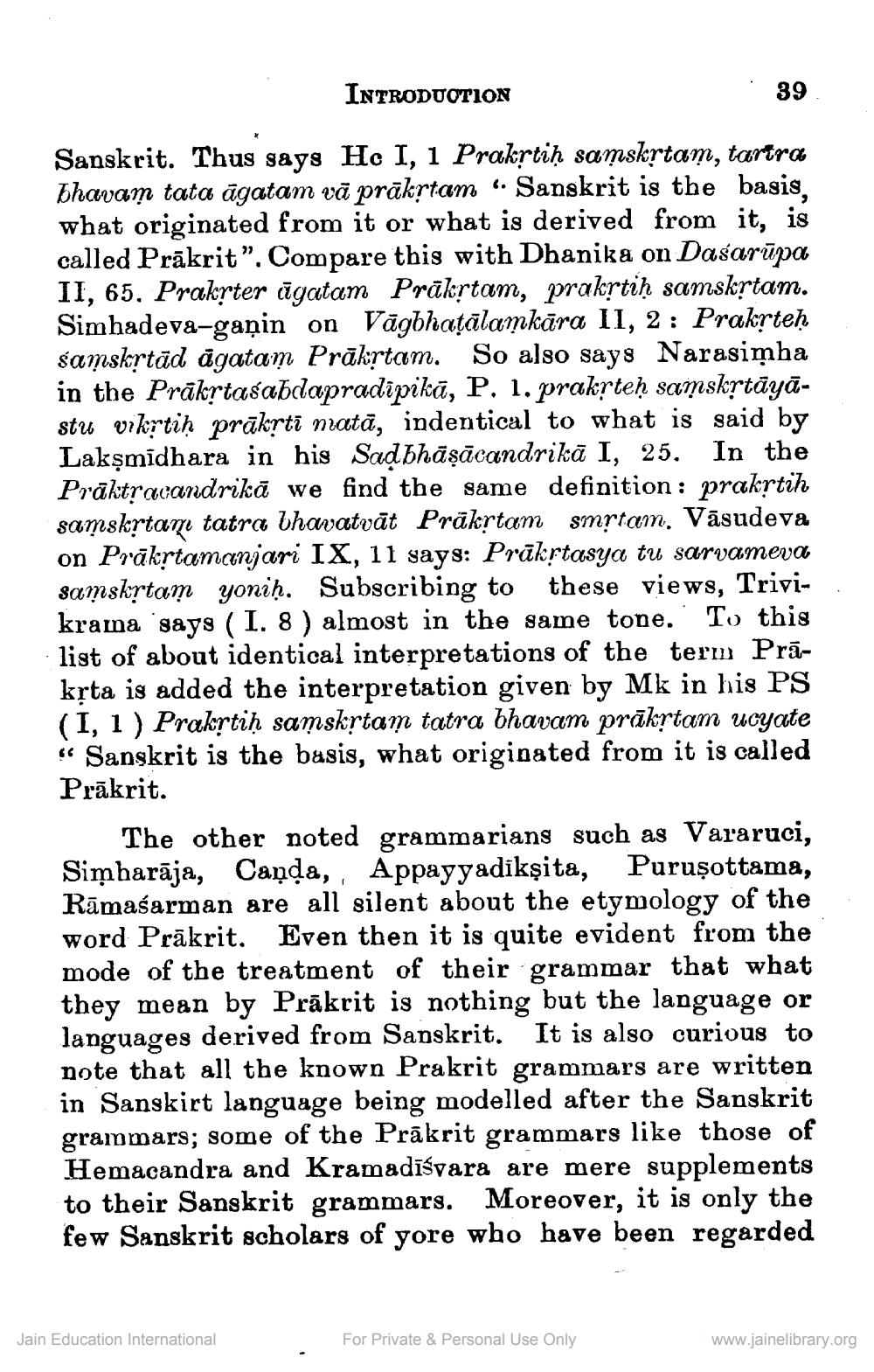________________
INTRODUCTION
39
Sanskrit. Thus says Hc I, 1 Prakrtiḥ samskrtam, tartra bhavam tata āgatam vā prākstam “ Sanskrit is the basis, what originated from it or what is derived from it, is called Prākrit”. Compare this with Dhanika on Dasarūpa II, 65, Prakrter ūgatam Prākstam, prakrtiḥ samskrtam. Simhadeva-gaộin on Vāgbhatālamkāra II, 2: Prakrteh samskrtād agatam Prākrtam. So also says Narasimha in the Prākrtasabdapradipikā, P. 1. prakrteḥ samskrtāyāstu vikrtiḥ prākrti matā, indentical to what is said by Lakşmidhara in his Sadbhāṣācandrikā I, 25. In the Prāktracandrika we find the same definition : prakrtih samskrtam tatra bhavatvāt Präkrtan smrtam. Vasudeva on Prūkstamanjari IX, 11 says: Prākstasya tu sarvameva samskrtam yoni”. Subscribing to these views, Trivikrama says (I. 8 ) almost in the same tone. To this list of about identical interpretations of the term Prākặta is added the interpretation given by Mk in his PS (1, 1) Prakrtiḥ samskrtam tatra bhavam prākrtam ucyate “ Sanskrit is the basis, what originated from it is called Prākrit.
The other noted grammarians such as Vararuci, Simharāja, Caņda, Appayyadikşita, Puruşottama, Rāmaśarman are all silent about the etymology of the word Prākrit. Even then it is quite evident from the mode of the treatment of their grammar that what they mean by Prākrit is nothing but the language or languages derived from Sanskrit. It is also curious to note that all the known Prakrit grammars are written in Sanskirt language being modelled after the Sanskrit grammars; some of the Prākrit grammars like those of Hemacandra and Kramadīśvara are mere supplements to their Sanskrit grammars. Moreover, it is only the few Sanskrit scholars of yore who have been regarded
Jain Education International
For Private & Personal Use Only
www.jainelibrary.org




